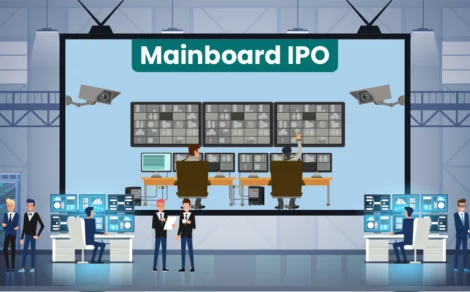There are three major types: Conservative, Moderate, and Aggressive. Each is based on your willingness and ability to handle investment risk.
Ever wondered why some people invest in volatile stocks while others stick to stable fixed deposits or money market instruments? The answer lies in something called a risk profile.
What is a risk profile? Simply put, it is a tool or framework used to determine the level of risk an individual is willing and able to take when investing. It combines both emotional and financial factors to guide investment decisions in line with one’s comfort with uncertainty.
In today’s dynamic financial world, understanding your risk profile is essential. It not only protects you from financial decisions that feel overwhelming but also helps you meet your long-term financial goals without unnecessary stress.
Key Components of Your Risk Profile
Your risk profile is influenced by several key components that reflect both your financial position and your personal outlook toward uncertainty and change. Here are the major factors that shape it:
- Risk Tolerance: This is the emotional side. It reflects how much investment risk you can psychologically handle.
- Risk Capacity: This is the financial side. It looks at how much amount of risk you can afford based on your income, expenses, assets, and liabilities.
- Time Horizon: The longer your investment time frame, the more risk you might be able to take.
- Financial Goals: Someone saving for retirement in 30 years will likely have a different risk profile than someone saving for a house in 2 years.
- Age and Life Stage: Younger investors tend to have a higher risk appetite compared to those nearing retirement.
These aspects collectively determine how you should ideally invest your money.
Different Types of Risk Profiles
There are broadly three main types of risk profiles, each reflecting a different level of risk-taking ability and mindset.
1. Conservative Risk Profile
- These investors are risk-averse.
- Prefer investments with minimal volatility, like money market funds, bonds, or fixed deposits.
- The primary focus is capital preservation.
- Suitable for those nearing retirement or with short-term financial goals.
2. Moderate Risk Profile
- Willing to take some amount of risk to achieve higher returns.
- Typically invest in a mix of equity and debt.
- Balanced investment strategy combining safety and growth.
- Ideal for medium-term financial goals.
3. Aggressive Risk Profile
- Comfortable with a high level of risk and volatility.
- Seek high returns through equities and other higher-risk instruments.
- Usually, younger individuals with long-term horizons and no immediate need for liquidity.
Knowing which category you fall into is critical for building a suitable investment portfolio.
Why Assessing Your Risk Profile Matters?
Understanding your risk profile meaning goes beyond just knowing your risk appetite. It helps in:
- Portfolio Allocation: You can build a customised portfolio based on your tolerance and capacity for risk.
- Preventing Emotional Reactions: If you know your limits, you’re less likely to panic during market downturns.
- Aligning with Financial Goals: Ensures that your investments match both your risk comfort and long-term objectives.
- Better Advice from Financial Advisors: A clearly defined risk profile allows your advisor to tailor suggestions to your specific needs.
- Efficient Wealth Management: Avoids mismatched investments and helps you stay the course during volatile periods.
Understanding Risk Profiles with Examples
Let’s look at how risk profiles play out in real-world scenarios:
Example 1: The Conservative Saver
Ravi, 55, is nearing retirement. He has limited income sources and prioritises capital protection. His risk profile is conservative. He invests mostly in debt mutual funds, bank FDs, and low-risk government bonds.
Example 2: The Balanced Investor
Priya, 35, is a salaried professional saving for her children’s education 10 years down the line. She can take some risks, but wants safety too. She has a moderate risk profile, investing 60% in equity mutual funds and 40% in debt instruments.
Example 3: The Aggressive Investor
Aman, 25, is just starting his career and has no major financial obligations. His financial goals are long-term wealth creation. His risk profile is aggressive, so he chooses to invest 90% in stocks and equity mutual funds.
Final Thoughts
Understanding your risk profile is a fundamental step in the investment journey. Whether you’re investing in stocks, mutual funds, or fixed-income instruments, matching your investments with your level of risk ensures smoother and more confident financial planning.
From short-term gains to long-term security, your risk profile shapes how your money works for you. If you’re unsure about your profile, don’t hesitate to consult a financial advisor who can help you take the guesswork out of investing.
Would you like help building a personalised investment strategy based on your risk profile? I’d be happy to guide you further.
Frequently Asked Questions
Risk tolerance is just one component of a risk profile. While risk tolerance is emotional, a risk profile includes financial capacity, goals, and time horizon.
Yes. Life events like a job change, marriage, or nearing retirement can shift your risk profile. Regular reviews are essential.
Knowing your risk profile ensures your investment decisions align with your goals and comfort with risk. It prevents emotional decisions and financial mistakes.
You can assess your risk profile through self-assessment tools or by consulting a financial advisor. Most tools ask about your income, goals, age, and reaction to market fluctuations.
Related Reads
Stock to Buy Today: November 19, 2025
The Indian stock market witnessed a mild decline on November 18, 2025, ending a...
By: torus
- 4 mins
- 19.Nov.2025
- 4.3(3)
- 9
Stocks to Buy Today: November 18, 2025
The Indian stock market closed positively on Monday, with the Sensex up over 388...
By: torus
- 5 mins
- 18.Nov.2025
- 4.3(3)
- 10
Stock to Buy Today: November 14, 2025
On Thursday, Indian Stock Market ended the session with marginal gains. The Nifty 50...
By: torus
- 4 mins
- 14.Nov.2025
- 4.3(3)
- 30
Stocks to Buy Today: November 13, 2025
The Indian stock market ended Wednesday’s session on a strong footing, with the Sensex...
By: torus
- 7 mins
- 13.Nov.2025
- 4.3(3)
- 33
Stocks to Buy Today: November 12, 2025
Despite a sluggish start, the Indian Stock Market saw benchmarks like Sensex and Nifty...
By: torus
- 5 mins
- 12.Nov.2025
- 4.3(3)
- 38
Stocks to Buy Today: November 11, 2025
The Indian stock market rebounded smartly on Monday, snapping a three-day losing streak. The...
By: torus
- 5 mins
- 11.Nov.2025
- 4.3(3)
- 52
Disclaimer: The content provided in this blog is for informational purposes only and does not constitute financial advice or recommendations. The content may be subject to change and revision. Readers are encouraged to conduct their own research and consult with a qualified financial advisor before making any investment decisions. Torus Digital and its affiliates takes no guarantees whatsoever as to its completeness, correctness or accuracy since these details may be acquired from third party and we will not be responsible for any direct or indirect losses or liabilities incurred from actions taken based on the information provided herein. For more details, please visit www.torusdigital.com.
Tenneco Clean Air IPO Listing: Strong Market Debut with 27% Premium
Tenneco Clean Air India Ltd made a confident entrance into the public markets on...
By: torus
- 5 mins
- 19.Nov.2025
-
3.7(6)
-
58
Stock to Buy Today: November 19, 2025
The Indian stock market witnessed a mild decline on November 18, 2025, ending a...
By: torus
- 4 mins
- 19.Nov.2025
-
4.3(3)
-
58
Mirae Asset Infrastructure Fund NFO: A Sector-Focused Bet on India’s Growth
Mirae Asset Mutual Fund has launched a new equity scheme — Mirae Asset Infrastructure...
By: torus
- 4 mins
- 18.Nov.2025
-
4.3(6)
-
58
Emmvee Photovoltaic IPO: Shares Make Muted Market Debut, List Flat At ₹217
Emmvee Photovoltaic Power made a muted debut on 18 November 2025, listing flat at...
By: torus
- 3 mins
- 18.Nov.2025
-
3.7(6)
-
58


